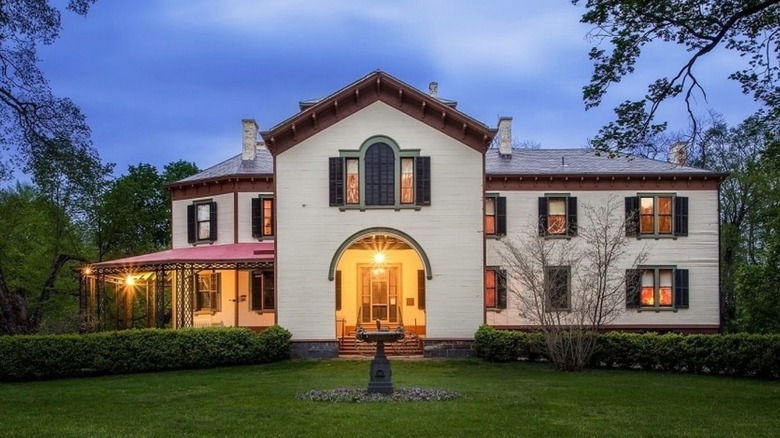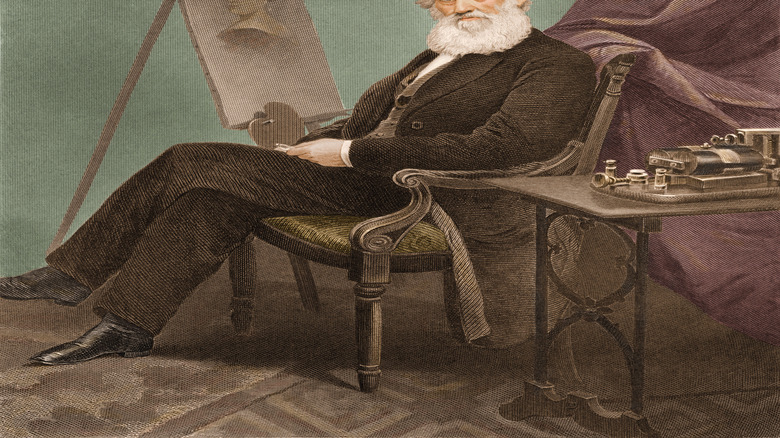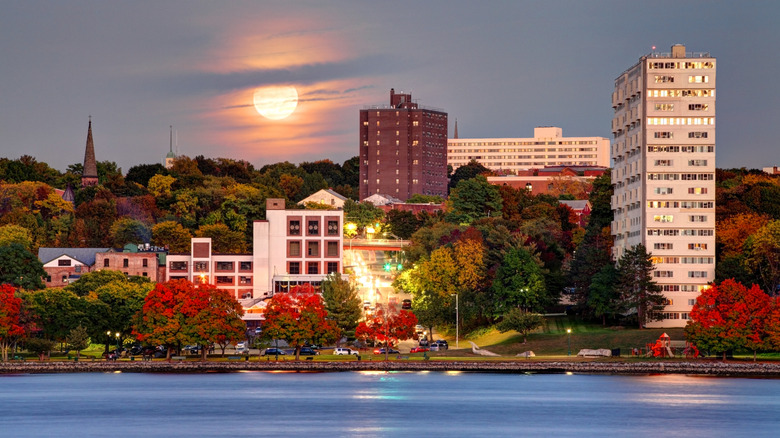This Historic Mansion In New York Is Inspired By Stunning Italian Villas
When you arrive at Locust Grove Estate in Poughkeepsie, New York, you might be surprised to find yourself staring at a residence that looks more Mediterranean countryside than typical Hudson Valley gentleman's estate. Built on a bluff overlooking the Hudson River, the estate immediately conveys the sense of an Italianate villa transplanted into the American landscape. The home was designed in the early 1850s for Samuel F. B. Morse (yes, the inventor of the telegraph and Morse code) by architect Alexander Jackson Davis.
What catches the eye are features you'd associate with a Tuscan retreat: low-slung rooflines, tall, narrow windows, a somewhat asymmetrical tower, generous eaves with brackets, and the way the building is set into the landscape with commanding views of the river below. Davis and Morse collaborated to create an Italianate villa never before seen in the region.
It wasn't just about the building, though. The grounds, the way the house embraces its site, the layout of lawns and vistas — all of this plays into that villa-inspired mindset: a home for leisure, landscape appreciation, and a relaxed but elegant lifestyle. Here, the historic footprint of the 1850s Italian-inspired home still thrives, urging the visitor to pause, walk, and soak in the architecture and setting together.
A design that speaks of Italy
The Italian inspiration at Locust Grove isn't a vague nod, it shows up in specific architectural moves and design choices. The mansion, finished around 1852, features the kind of villa-elements you might expect from a European tour: a tower structure, an emphasis on picturesque form rather than strict symmetry, and wide overhanging eaves with decorative brackets that lend the building a relaxed elegance.
In fact, Morse himself drew inspiration from his travels in Italy and sketched towers, windows, and floor plans for his architect, Davis. By doing so, he signaled that the home wasn't merely a summer retreat, it was meant to evoke the rhythm and mood of an Italian countryside villa, adapted to the American context. Also, the strategic location of the house (its commanding position over the Hudson and the view corridors cleared as part of the design) reinforce the drama of the setting in a way that Italian villa designers would have appreciated. The later owners, William Young and Martha Young, added modern amenities (like electricity and central heating) but maintained the villa's unique character. For visitors, it means more than just looking at a stately house — you're experiencing the fusion of art, architecture, landscape, and lifestyle.
What to experience on your visit
If you plan a visit to Locust Grove, you're in for more than just a house tour. The estate today comprises about 200 acres of landscaped grounds, with 5 miles of hiking and carriage-roads turned trails, set in a stunning Hudson River Valley context. The mansion remains open for guided tours and houses a significant collection (about 15,000 pieces) of furniture, paintings, and decorative arts from the Young family era, all thoughtfully preserved. Walking the grounds, you'll also notice the gardens and the way the estate negotiates its natural slope toward the river. It's a rare combination of architectural elegance plus expansive natural setting. For you as a traveler, plan to linger. Maybe arrive early for a stroll through the garden archways, then tour the villa, then sip a coffee and enjoy the vista.
One useful tip: though the house is the centerpiece, give yourself half a day (or more) to wander the grounds and enjoy the view. And when you're inside, look for those villa-style details — the tower, the eaves, the framing of the river view — they're what sets Locust Grove apart from many other historic homes in the region.
Locust Grove Estate offers a taste of Italy in the Hudson Valley, not by importing marble or copying a chapel, but by inhabiting the spirit of the Italian villa — the integration of architecture, landscape, comfort, and beauty. And that makes it a memorable stop if you're checking out the cool villages of upstate New York or exploring the region's many historic homes.


